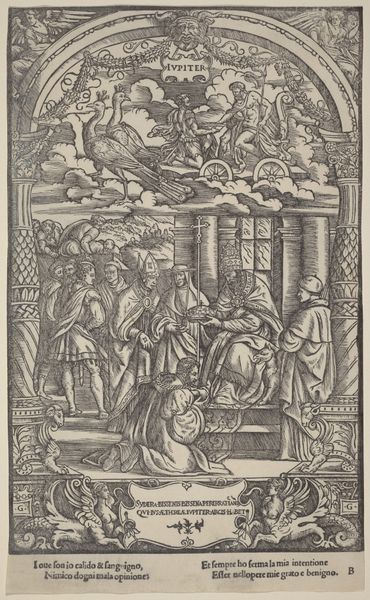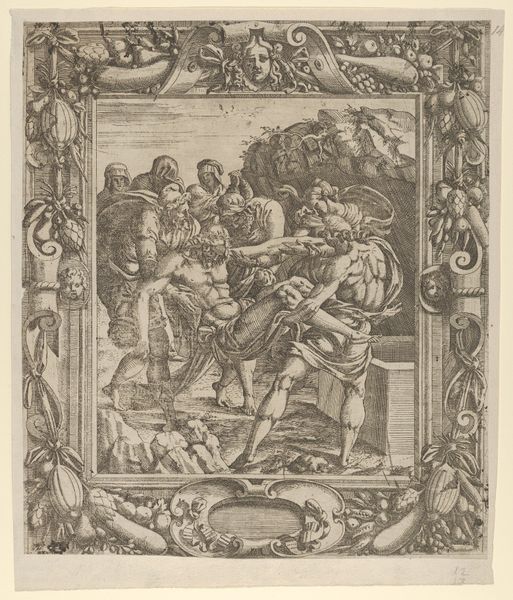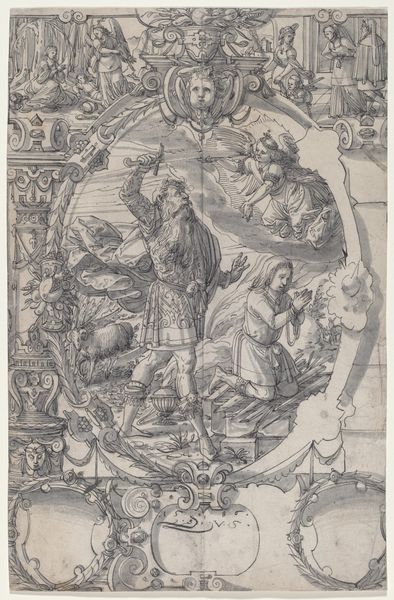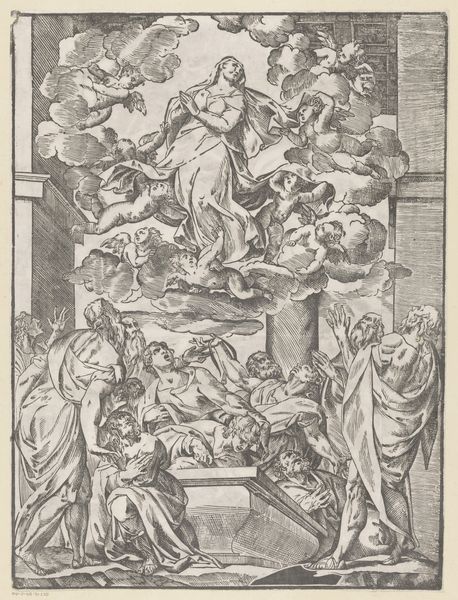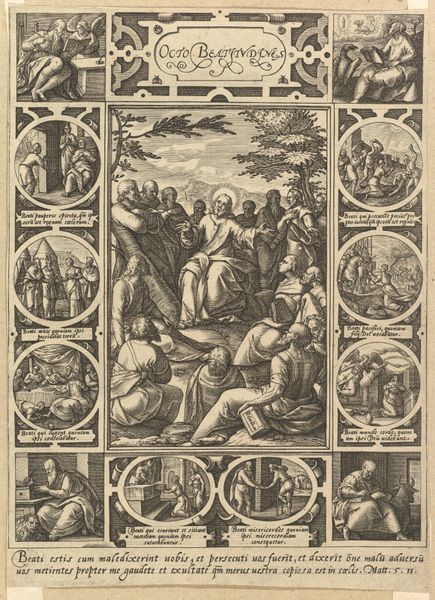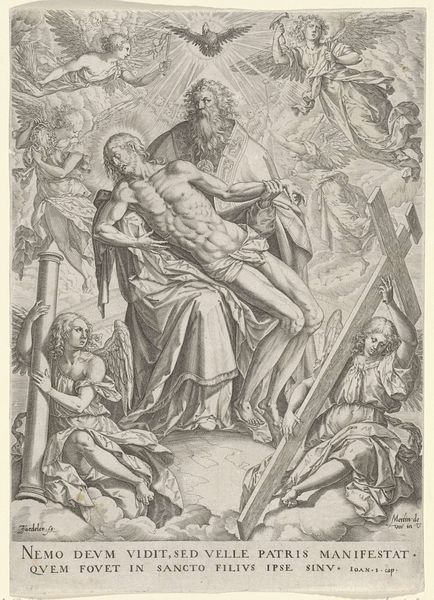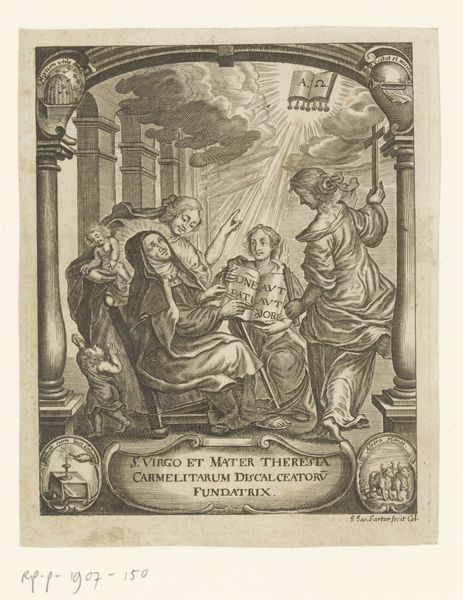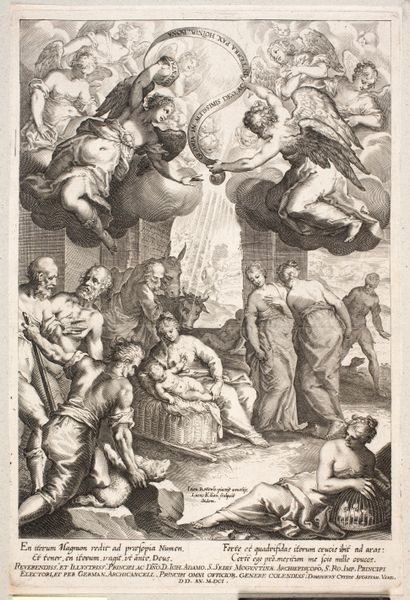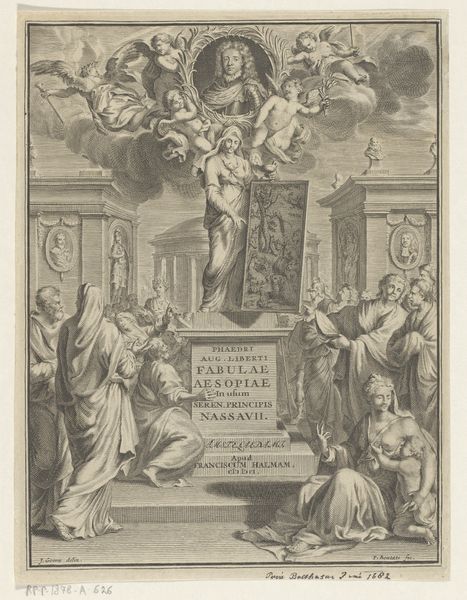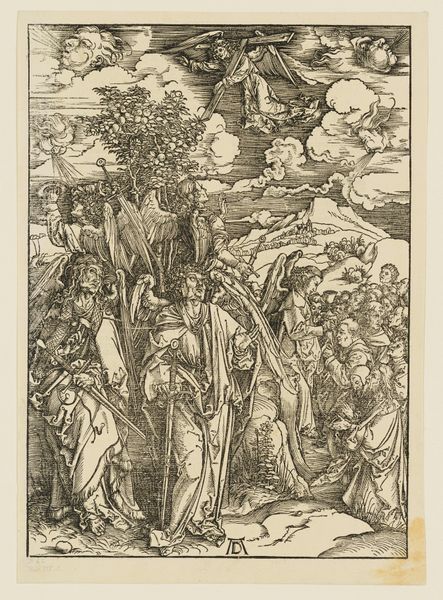
engraving
#
portrait
#
allegory
#
baroque
#
old engraving style
#
caricature
#
history-painting
#
engraving
Dimensions: height 322 mm, width 222 mm
Copyright: Rijks Museum: Open Domain
Editor: This is an engraving from 1648 by Cornelis Bloemaert, titled "Koning Ferdinand IV," or King Ferdinand IV. It's an intriguing depiction of the King, surrounded by allegorical figures. I am struck by how much symbolism is packed into one image, though the message is hard to decode right away. What do you see in this piece, beyond just a portrait of a king? Curator: It’s a fascinating example of how power was visually constructed and communicated in the Baroque era. Forget simple likeness; here, imagery conveys authority. Look at how Ferdinand is elevated, literally, above these female figures, who represent virtues and abstract ideas. Where do your eyes go? Editor: I immediately notice the woman holding scales—is that justice? And the babies—or are they cherubs? The symbols are very busy. Curator: Precisely. Justice, likely. Consider scales, traditionally associated with Libra, evoking a sense of equilibrium and moral balance, essential for governance. Notice too, where she directs her gaze: upwards, beyond the material plane to "Truth," itself a charged concept for the ruling class during this era. Those seemingly innocent 'babies' could hint at new beginnings or even divine blessings granted upon the King and his reign. It all speaks to the projected image of a divinely ordained ruler. What, then, is he holding? What does that imply? Editor: He holds a staff, so maybe he's a shepherd of his people? He looks a bit passive though, almost like a statue. It contrasts with the dynamic figures surrounding him. Curator: That “passive” statue-like quality underscores the idea of permanence and unwavering authority. The staff, yes, perhaps alluding to the Good Shepherd archetype. Consider this alongside other repeating elements, like light, the winged figures above him and its effect in establishing cultural memory of a noble monarch across future generations. Does it work or is it ultimately a cliché? Editor: It feels a bit over the top to my eye! But I understand how all the symbolism contributed to projecting an image of strength. Curator: Indeed. It reveals so much about the psychology of power and how visual language shapes our perception of leadership throughout time. It’s much more than a portrait, and closer to a persuasive piece.
Comments
No comments
Be the first to comment and join the conversation on the ultimate creative platform.

